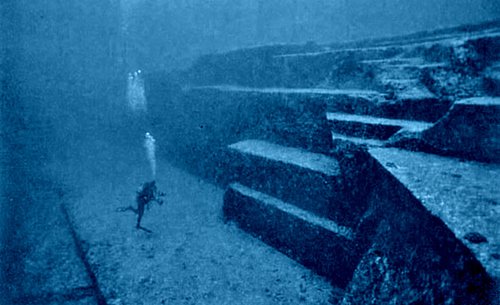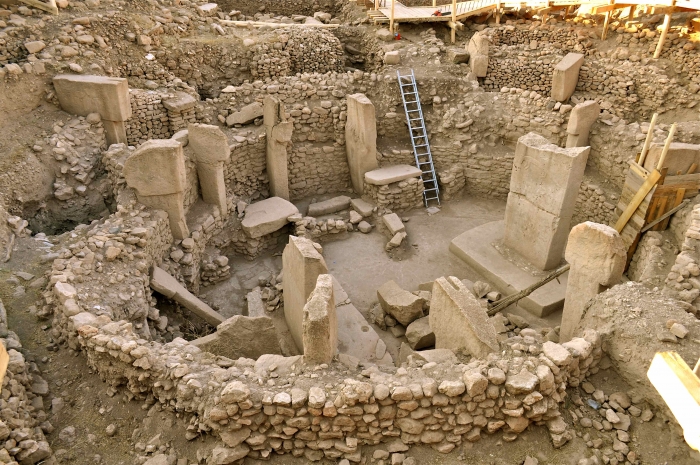9. Yonaguni Monument – Yonaguni, Japan
Submerged off the coast of the Southernmost Ryukyu Island in Japan are a series of stepped flat steps in a structure so angular and flat, it would suggest man-made intervention although debate within scientific communities continue as to whether it is completely natural, is a natural site that has been modified, or is a man-made artifact.

Only discovered in 1987 by divers looking for hammerhead sharks, Supposed to be around 10,000 years old, neither the regional or national governments of Japan consider it to be of cultural or historical importance, and so significant research has not been put into dating the structure or why it is under the sea.
10. Unfinished Obelisk – Aswan, Egypt
Obelisks dot ancient sites across Egypt, and the globe, as sort of monuments or adornments to temples but why this one was ordered has never been discovered. What is the largest known ancient obelisk, it sits partially carved directly from the bedrock of Aswan and was ordered by the Pharoh Hatshepsut and is nearly one-third larger than any ancient Egyptian obelisk ever erected.

Abandoned due to cracks appearing in the structure, the reasoning behind its original conception have never been discovered.
11. Gobekli Tepe – Orencik, Turkey
Dating to around 8BC, the site consists of buildings thought to be sanctuaries and places of worship and stone pillars. Not linked to any of the major religions, the use and relevance of the stone pillars remain unknown, and research into the archaeological site remains ongoing.

With only 5% of the site uncovered, the complex remains a mystery to all those looking to reveal its secrets.
12. Saksaywaman – Cusco, Peru
A citadel just beyond the limits of the capital of the Incan empire, this walled settlement was most likely built to hold up any approaching forces heading for Cusco. What is unique about its construction is that the walls are made of perfectly carved rocks that slot together without the use of mortar.

How such an ancient civilization managed to achieve such a high-level of construction remains up for debate, especially since it was so good that the walls still stand today, over 1000 years after they were put up.
14. The Baigong Pipes
It may look like a modern art installation, but this site is far from new. Located in Mount Baigong in China’s Qinghai province and thought to be 150,000 years old, the Baigong Pipes form a magnificent structure of three triangular caves and stretch right through the mountains and even the nearby salt lake.

But how can such a historic structure have been made in times where the only tools were those of your limbs? That seems to be the million dollar question….
15. The Baghdad Batteries
The Iraqi capital, Baghdad, has long been thought of as the birthplace of mathematics and was once deemed the cultural capital of the world. Perhaps one such example of the city’s rich history and esteemed past are these strange artifacts. Discovered while examining 2,000-year-old ruins of a village in Baghdad, workers, by sheer chance stumbled upon three vase-like objects. But what made the discovery significant was the red copper interior- evidence of acid erosion.

From this, scientists deciphered that the acid erosion was probably the remains of a liquid which would interact with the copper to create an electrical charge. If true, the finding could be one of the world’s first examples of a battery.
16. Saqqara Bird
Found in the 1898 evacuation of a tomb in Egypt, the artwork went missing until Dr. Khalil Messiha rediscovered it. From his research, Messiha believed the object, which dates back to 200 BC, represented the first signs of aviation. Since the theory, the museum of Cairo has labeled the artifact ‘model airplane.’

However, the consensus among historians is that the Saqqara Bird is nothing more than a well-carved Falcon- a species of bird associated with Egyptian mythology due to the bird’s significance to the gods.

Leave a Comment